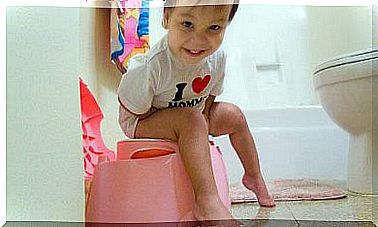How To Encourage Your Child’s Autonomy?

There is nothing more important than educating children who are independent and free. For this, parents must, from an early age, encourage their children’s autonomy. Because this is, no more and no less, the basis of childhood learning and development. For this reason, it is a priority objective in all education.
Now why is it so important to encourage your child’s autonomy? In the first instance, because an autonomous child is a minor capable of carrying out tasks and activities by himself. Furthermore, these are children who assume without problems
responsibilities
and have a great initiative.
Greater social skills when establishing relationships of all kinds, and lesser possibilities of going through learning problems are its rewards. Even security and trust become your cover letter par excellence.
The idea is to start encouraging your autonomy day by day in those everyday situations at home. Thus, this evolutionary task constitutes a key to the age
preschool
of every child. Only in this way can a child take risks, learn from failure and error, and cherish success.
Tips to encourage autonomy in children

Below, we share a series of recommendations to encourage your child’s autonomy. However, remember that this is time consuming. So don’t hesitate for a second: set aside a moment of the day especially for this mission. Be patient, respect your times and, of course, be consistent with the tasks assigned, which fit your age.
On the other hand, remember that every child is different and therefore has different learning paces. It is essential here to know yours perfectly.
capabilities
, as well as recognizing your effort. Offer the opportunity to try, don’t be afraid of mistakes and congratulate every little hit. This is simply learning.
Don’t think anymore, do a great good for your child for the future! He started asking for his first gestures of independence for a year and a half, which have to do with his motricity. From the age of two, teach him to communicate fully, especially emotionally.
The same happens in the case of food, cleaning and hygiene, basic living behaviors, and even when getting dressed. Only after the age of five does the range of tasks and activities to be done begin to open up.
Encourage autonomy: 6 tips to achieve it

● Allow it to count for itself. Let him act alone, no matter the minor consequences. It doesn’t matter how long it takes or how much you make mistakes in the beginning. Were you born knowing everything? Patience and perseverance are the key, but always stay around to offer support and help.
● It is about offering options to choose and teaching how to seek solutions. Avoid planning and setting rigid schedules. Let her choose leisure alternatives and even those related to her personal tastes. It’s also good to show him the source that solves his doubts and inconveniences. Brighten the way you act and feed your curiosity.
● Teach her to think. This is critical. No matter how long it takes, or how doubtful the child is. Don’t give automatic responses, encourage her to think her own
answers
, to elaborate their theories. Your reasoning, imagination and creativity will thank you in your adult life.
● Give her your space (physical and emotional). Don’t force the child to do what he doesn’t want. Let her choose the right time and place. If she doesn’t want to communicate the stories of the day, wait for your moment without harassing her with questions. Also don’t you dare invade your privacy. You can allocate a space in your home for playtime, reading, meditation or rest.
● Don’t discourage her or limit her. Let the child taste and experiment freely and without fear of making mistakes. Children have an invaluable gift for imagining adventures and proposing fabulous short-term challenges. Cheer her up, take away her worries, teach her to get up from the fall and reflect on it. If necessary, show alternative paths and set new goals.
● Measure instructions and demands. Offer tasks that the child is able to do according to their age, and that they really know how to do them. For this it is necessary to give her explanations and offer short, clear and
simple
. Become her example and guide her to learn and implement on her own.









